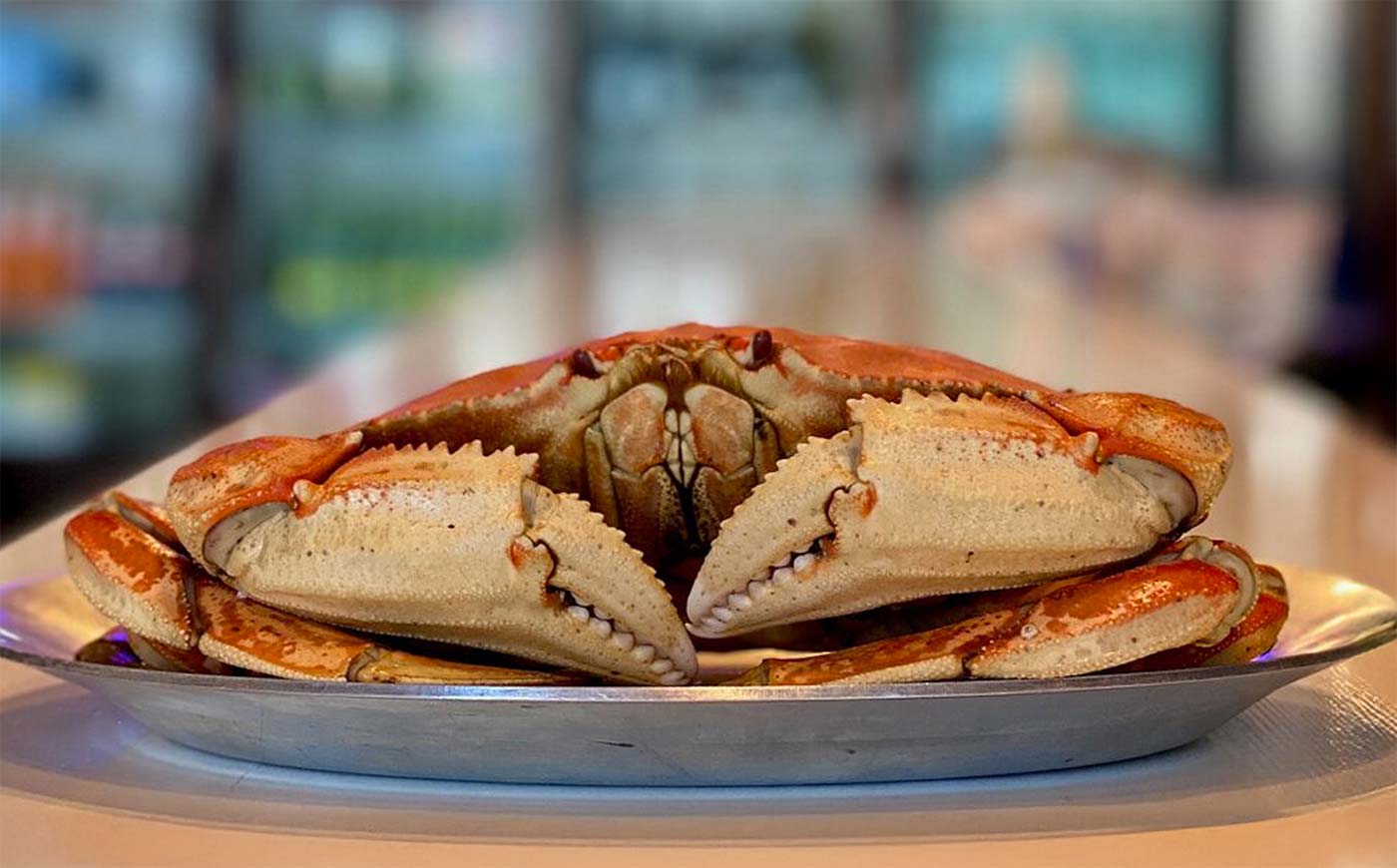
These Seattle restaurants still celebrate every part of the animal
IMAGES BY TROY OSAKI
Editor’s Note: The print and static digital editions of this story incorrectly spelled Chef Trinh Nguyen’s name. We sincerely apologize for the error, and it has been corrected in this story.
At the turn of the 20th century, the Butler Hotel was the place to be. The popular downtown hotel, on the corner of 2nd Avenue and James Street, was where Jazz Age Seattleites came to see and be seen. There was dancing, fame, crime and extravagant food. In addition to a long list of champagnes, a New Year’s Eve menu from 1914 prominently featured a variety of caviars, pickled pig’s feet, lamb tongue, grilled calf sweetbreads and goose livers fried in butter.
This menu attracted a clientele of railroad executives, actors and politicians of the time. It also celebrated the variety of cuts that each animal had to offer. Over the course of the last century, these ingredients have fallen out of favor as more prime cuts of meat, the muscle of the animal, became more affordable.
However, for every cow that is turned into steak, there is a trove known as offal—heart, liver, kidneys, tongue. The Butler Hotel may have closed in 1933, but in the Seattle of today, there is a strong contingent of chefs still championing offcuts and offal for their flavor, nutrition and cultural significance.
“I feel like this generation is the offspring of people who were forced to eat offal and then kind of or swore off it,” says Taylor Thornill, executive chef at Bateau, Renee Erickson’s steak house in Capitol Hill. “But then [my] generation is like, oh, there are these great ingredients and great restaurants are preparing them, and I want to know more about it.”
While Bateau’s specialty is dry-aged, grass-fed steaks, Thornhill makes sure to punctuate the menu with the rest of the cow. Instead of butter, his bread course includes a beef liver mousse to spread on toasted beef fat brioche with fruit paste and fermented wholegrain mustard. Thornhill often includes beef kidneys on the tasting menu, an ingredient that is still polarizing at times.
“I think there is that inevitability that no matter what it is or how it’s presented, you may never change certain people’s minds,” says Thornhill. “But for us, it’s about utilizing the whole animal, and eating offal is part of that.”
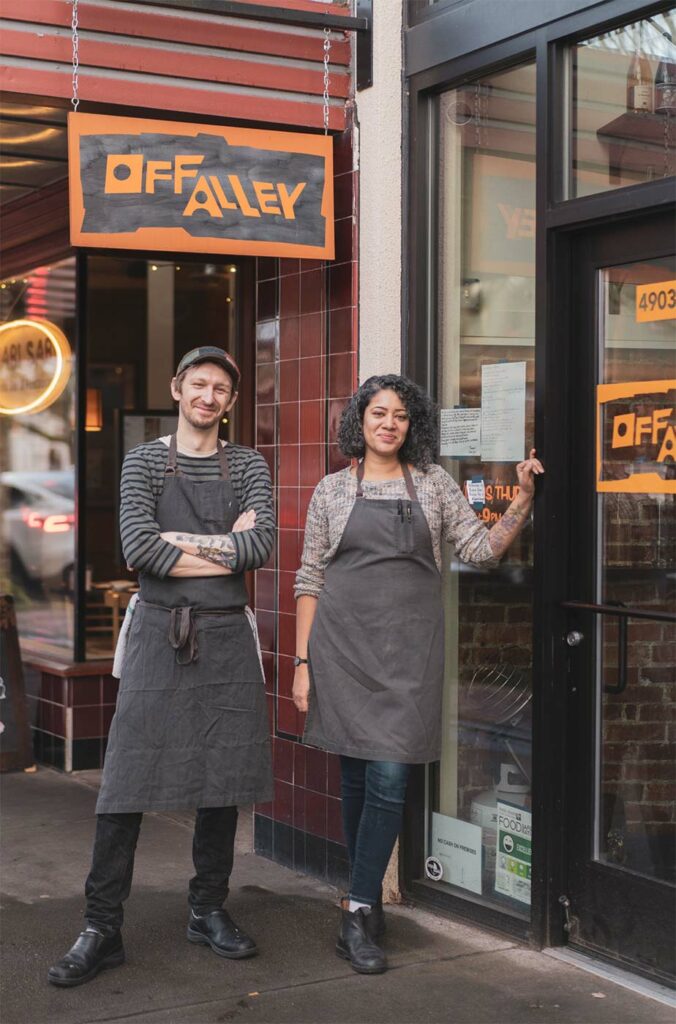

REDUCING WASTE, INCREASING TASTE
Evan Leichtling at Off Alley in Columbia City echoes this sentiment with a mind for cultural preservation.
“One part of the conversation is about sustainability and not throwing things away or wasting food,” says Leichtling. “But the second part of the conversation is preserving or recovering forgotten techniques, knowledge and history—how to clean and prepare sweetbreads, making a proper sausage, working with livers, cleaning and cooking sea cucumbers, how to harvest lamb brains, working with blood. The list goes on and on.”
At Off Alley, Leichtling and co-owner Meghna Prakash prepare imaginative yet approachable dishes with plenty of offal. The handwritten chalkboard menu might feature a collection of things like fried duck heads, blood sausage, rabbit kidneys on toast, monkfish liver, grilled lamb tongue, beef tendon, sweetbreads or foie gras ice cream. Many of these ingredients were historically cheaper than premium cuts of beef. However, cheap cuts are often more labor intensive to prepare.
“Basically you save money buying it but you then have to put the labor into manipulating it and preparing it,” says Leichtling. “It’s really heartbreaking right now. I’m having a really hard time procuring a lot of these ingredients. Right now it’s cheaper for most slaughterhouses to throw away the organs than make them sellable. It’s getting to a point where offal is becoming more expensive than meat, even if it might require double the labor compared to preparing a steak.”
Yenvy Pham, whose family has operated Phở Bắc Sup Shop in Little Saigon for the past four decades, has also witnessed the price of offal increase.
“Bone marrow, tendon, tripe, they all used to be extremely affordable but now the prices are just skyrocketing,” says Pham. “In the early 2000s, the price of bone marrow shot up by around 400% because the American market started to eat roasted bone marrow.” Pham isn’t exaggerating; prices on bones, for marrow and for bone broth, have continued to rise. Even as recently as 2017, ranchers and farmers struggled to get anything in exchange for bones, before demand had a dramatic uptick that often exceeded supply.
At Phở Bắc Sup Shop, bone marrow and livers have added richness to their soups and sauces long before the offal renaissance began.
“There are always things on the menu that [marrow and livers are] incorporated into that you don’t see. All of our pâtés have bone marrow. The main sauce for the dry noodle dish is liver and pineapple. We use a lot of liver because it’s really fatty and has a great flavor.”
“It’s really heartbreaking right now. I’m having a really hard time procuring a lot of these ingredients. Right now it’s cheaper for most slaughterhouses to throw away the organs than make them sellable.”
—Evan Leichtling
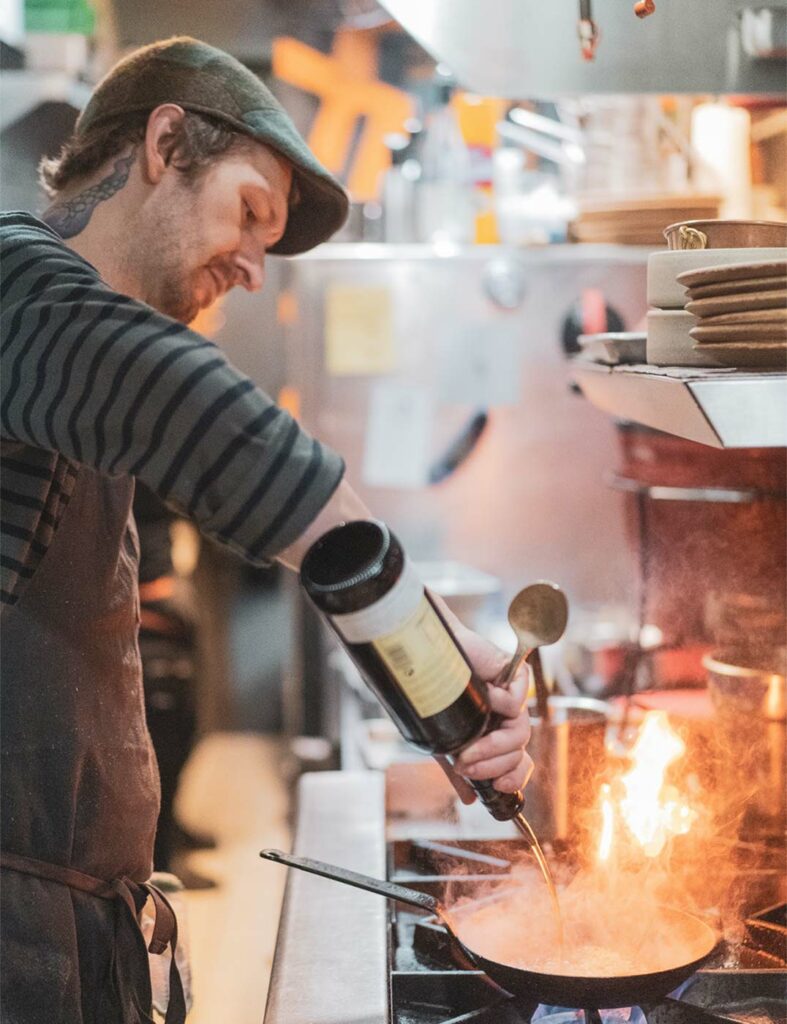
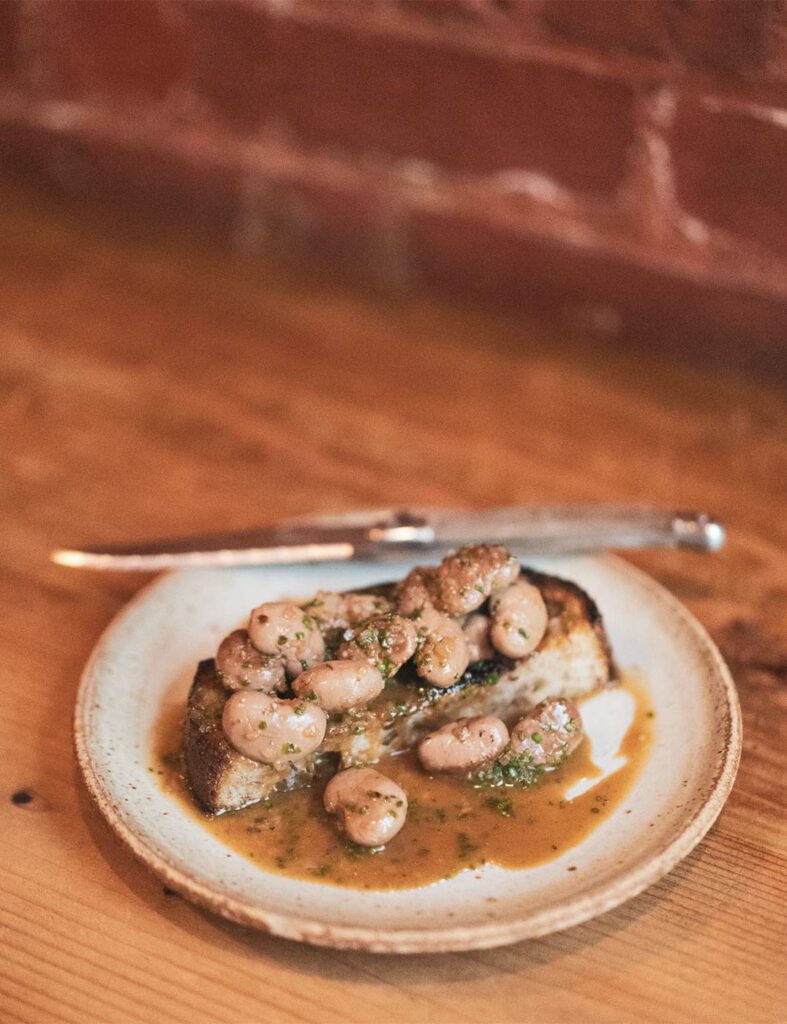
RARE TASTES
Kevin Smith of Beast and Cleaver, a butchery and restaurant in Ballard, also makes use of the rich flavors and properties of liver, skin, tongues and more. Next to the jewel box of primal cuts of meat are impeccably crafted pâtés of duck, fig and foie gras, blood and tongue terrines and pork rillettes. These preparations are classics within the English and French culinary canon, and are familiar territory for Smith, who is originally from England.
“My favorite might be pig livers. They’re so versatile and really, really underused. We use them in all of our pâtés but people here just don’t use them, they automatically go for chicken livers. Pig liver is cheap, delicious and nutrient dense,” says Smith. “I think Americans have been slower to get on the liver and offal bandwagon; it’s a lot more common in England for people to have things like braised liver and onions.”
American re-adaptation to certain offal may be slow. However, consider the astronomic trajectory of the popularity of raw fish within this country, thanks in part to local sushi legend Shiro Kashiba. Some sushi is more mainstream, but the cuisine has its own uses for offal.
At LTD Edition Sushi in Capitol Hill, chef Keiji Tsukasaki—who trained under Kashiba—is bringing fish offal to the fore. Alongside nigiri sushi, Tsukasaki offers guests a variety of chinmi, which translates to “rare tastes.” Among this chinmi at LTD Edition are sea cucumber innards, fermented squid, salt-cured bonito organs, monkfish liver and cod milt.
“We want our customers to enjoy these items so we go to great efforts to make them appetizing, and people are happily eating these dishes,” says Tsukasaki. Some of the curing processes take up to a year or more, all of which are done in-house. “We would love to start making these chinmi with Puget Sound fish, but it is difficult to find a consistent supply.”
“The idea of eating a 17-day-old embryo egg or a fertilized egg is scary because you can see the beak, you can see the [down] and you can see everything in it. They didn’t grow up with it, but they’re curious.” —Trinh Nyugen
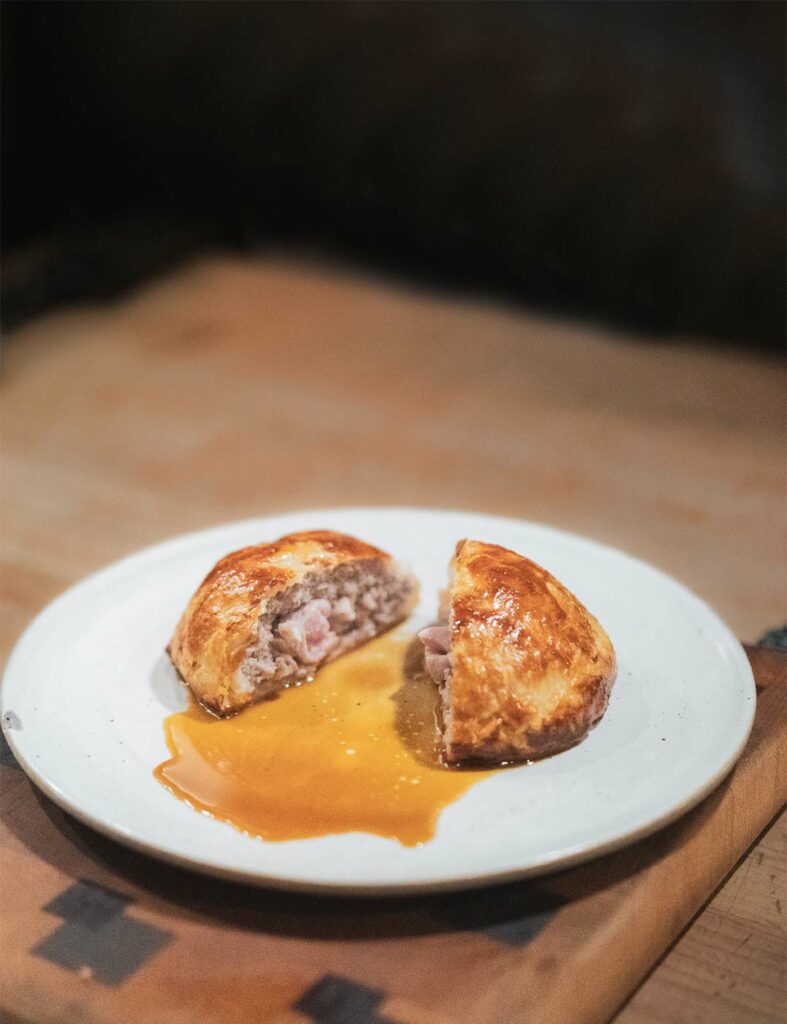
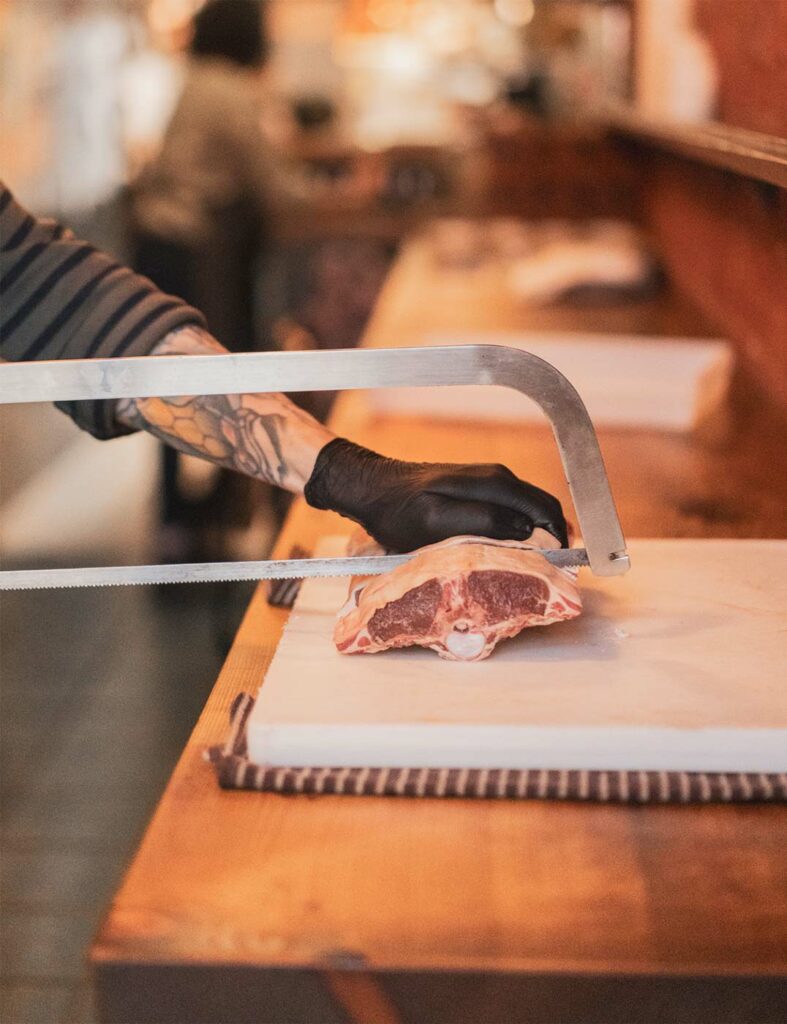
A CONNECTION TO TRADITION
Victor Steinbrueck, owner of Local Tide in Fremont, has found a way to make use of an often discarded ingredient found inside the plentiful local favorite, Dungeness crab. Within the carapace of a crab is a deposit of sweet, rich crab-flavored goodness, also known as tomalley, or crab fat. It is, in fact, a digestive organ called the hepatopancreas and functions, as the name suggests, as the crab’s liver and pancreas, and is considered a delicacy.
“It’s the essence of the crab,” says Steinbrueck. “We make it into the mayo for the crab roll, we do a crab fat curry, crab fat butter. It’s a real umami blast and full of flavor.”
When Steinbrueck opened Local Tide, he wanted to present something that was true to the Pacific Northwest. Growing up in Seattle he often went to Uwajimaya or Lam’s Seafood to buy crab to eat with his family.
“My grandma, her favorite part of the crab was the crab butter. So when I started the Local Tide, we wanted to bring in live crabs and crack it ourselves and offer a true, fresh-cooked and cracked crab,” says Steinbrueck. “We ended up with all this crab butter, and I was like, damn, my grandma would be so happy, you know? And I love it, too.”
If memory and nostalgia are the basis for many of our food habits and preferences, it would seem that integrating offal into an uninitiated adult’s diet would be a tall order. However, that is precisely what sister and brother team Trinh and Thai Nguyen are trying to do at Ramie, a Vietnamese restaurant that opened in Capitol Hill in summer 2024.
“I had a recent conversation with [our] sister about how she and her friends who are in their early 20s have always wanted to try balut or hột vịt lộn,” says Trinh Nguyen. Balut is a fertilized duck egg embryo that is eaten whole, and is considered a culturally significant food, particularly in Vietnam and the Philippines. “But they’re terrified of it. The idea of eating a 17-day-old embryo egg or a fertilized egg is scary because you can see the beak, you can see the [down] and you can see everything in it. They didn’t grow up with it, but they’re curious.”
In response, Nguyen crafted a dish that could help ease the younger generation into eating this traditional food. Instead of an embryo cooked in its own broth, she makes a creamy duck egg custard and tops it with duck ragu and rau răm (Vietnamese cilantro) oil. Nguyen tested her gateway version of balut on several of her Vietnamese friends who were curious, but hesitant to eat a fertilized duck egg.
“They loved it and the response has been ‘Oh my god, thank you so much for doing that, because I would never have imagined eating the real thing, but now I have the courage to try the real thing,’” says Nguyen. “Some of them would then go to the market and buy the real thing and take it home to try.”
As American food culture becomes more curious and courageous in revisiting its history, it is only natural that these age-old ingredients will receive the acclaim they deserve. This is thanks to the hard work of these local chefs who are reducing food waste while also offering customers a fuller portrait of the deliciousness of each animal.
“For us, one part of using offal is about utilizing the whole animal,” says Thornhill. “But it’s also about presenting a hopeful dish that changes people’s minds about offal.”
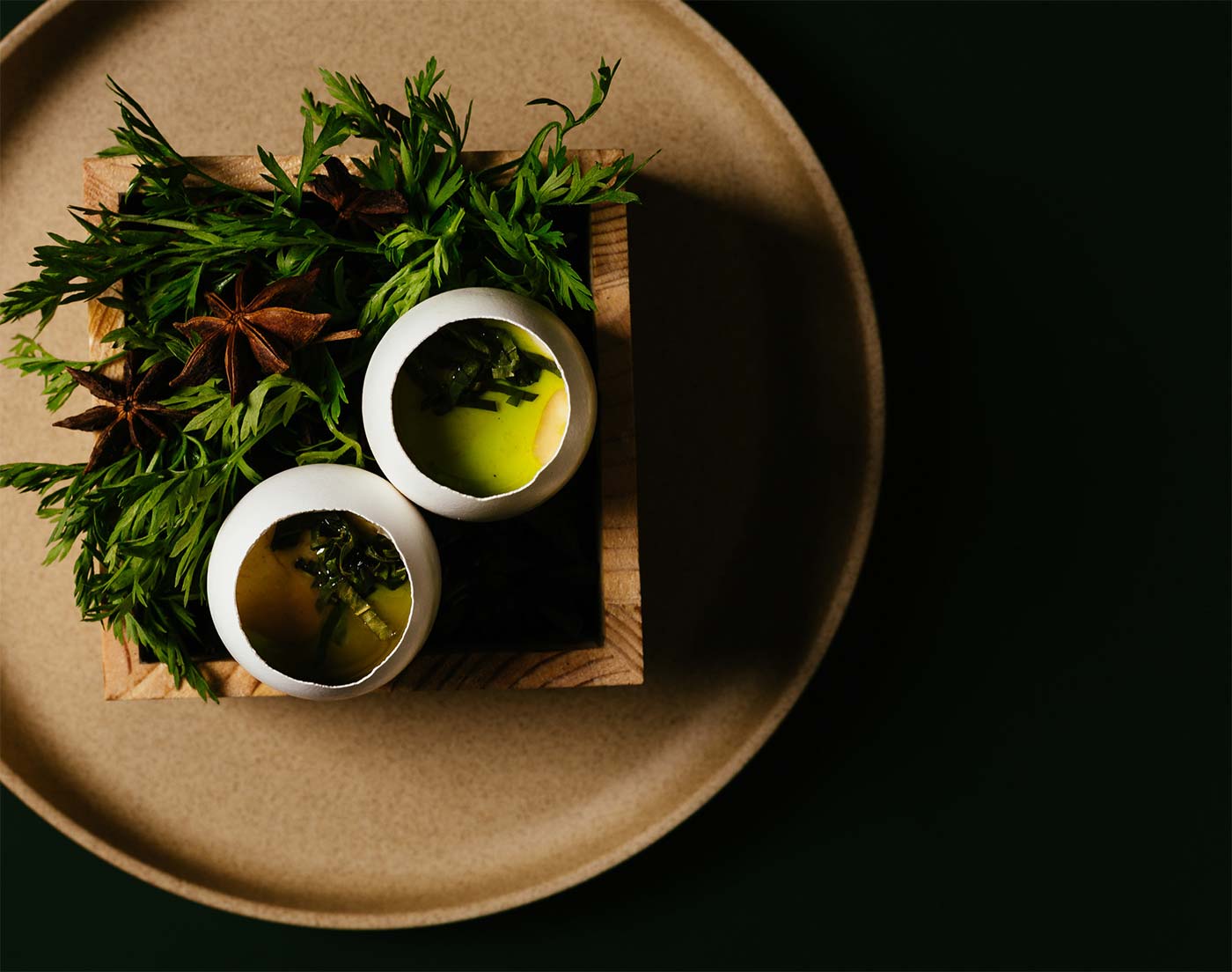
SEATTLE RESTAURANTS WITH WHOLE ANIMAL PROGRAMS
Bateau
1040 E Union Street
Seattle, WA 98122
Restaurantbateau.com
Off Alley
1/2, 4903 Rainier Avenue S
Seattle, WA 98118
Offalleyseattle.com
Phở Bắc Sup Shop
1240 S Jackson Street
Seattle, WA 98144
Thephobac.com
Beast and Cleaver
2362 NW 80th Street
Seattle, WA 98117
Beastandcleaver.com
LTD Edition
1641 Nagle Place, Suite 006
Seattle, WA 98122
Ltdeditionsushi.com
Local Tide
401 N 36th Street, Suite 103
Seattle, WA 98103
Localtide.com
Ramie
1529 14th Avenue
Seattle, WA 98122
Ramieseattle.com
